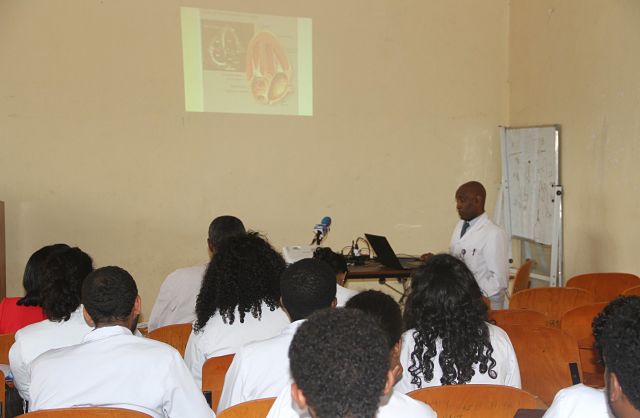 This is the second essay on government policy in Ethiopia directed at developing and retaining talent. Last week's post addressed the challenge of improving research productivity. (Photo: St. Paul's Hospital Millennium Medical College in Addis Ababa/Facebook)
This is the second essay on government policy in Ethiopia directed at developing and retaining talent. Last week's post addressed the challenge of improving research productivity. (Photo: St. Paul's Hospital Millennium Medical College in Addis Ababa/Facebook)
By Wondwosen Tamrat
A 2012 study at Addis Ababa University showed that around 53 percent of medical students hoped to emigrate upon graduating, particularly to the United States and Europe.
This is the second essay on government policy in Ethiopia directed at developing and retaining talent. Last week’s post addressed the challenge of improving research productivity.
On May 3rd 2019, the Prime Minister (PM) of Ethiopia held a meeting with 3 thousand health professionals from all over the country to discuss the state of health services and the challenges health workers are facing. Although the Prime Minister declared that the meeting was “key for policymaking” the health professionals appeared to be unsatisfied with the way he addressed their predicament. In spite of the concessions and the many promises made, a wave of strikes continued across the whole country.
While the solution to this particular turmoil might be the immediate concern of the government, there is general recognition that the sector’s challenges extend far beyond the current standoff and need structural and systemic changes. The government vows to make additional efforts and changes with the involvement of relevant stakeholders at national and regional levels. One challenge that needs to be addressed is the migration of health professionals, especially physicians, a tendency that has seen little change over the years.
Healthcare and medical education in Ethiopia
At a global level Sub-Saharan Africa is known for the lowest density of healthcare workers. According to the World Health Organization, Ethiopia has a health workforce ratio of 0.7 against the recommended ratio of 2.3 per 1000 population that is considered to be imperative for health coverage and making meaningful health interventions. Ethiopia’s physician-to-population ratio of 1: 21,000 is also regarded as one of the lowest in Sub-Saharan Africa.
Since 1994 the government’s health development programs have had important impact on the sector’s growth. According to the Ministry of Health (2016) there has been a significant increase in health posts, health centers, hospitals and personnel including officers, nurses, midwives and health extension workers. The number of schools and colleges providing health education training has increased; the graduation output of public and private schools including higher education institutions has also grown more than 16-fold since 1999/2000. According to the Ministry of Education (2018) there are currently more than 80,000 undergraduate students who pursue studies in medicine and health sciences both in public and private higher education institutions.
Despite the efforts towards improving the healthcare system that have produced quantitative gains, many challenges remain. The system is still deficient in infrastructure and resources, quality of education, internal quality assurance systems, performance assessment and retention, skill distribution, regional disparities that result in poor motivation to work in rural areas, little inclination to specialize in disciplines where there are skill shortages and more.
In order to respond to these multi-faceted challenges, the Ministry of Health has devised several strategies including its popular “flood and retain initiative” designed to bring meaningful change to the number of available health workers at all levels. While some improvements have resulted through such interventions, it has not been possible to solve the various challenges of the sector in a fundamental way, including the migration of physicians who continue to leave the public sector and Ethiopia for greener pastures inside the country and elsewhere.
—
Join the conversation on Twitter and Facebook.

























